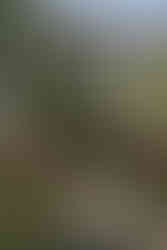I - Pankow Railyard and Pankow Swimming Hall
- Mathieu Cardosi
- Sep 10, 2024
- 3 min read
Updated: Feb 26, 2025
I arrived in Berlin in the midst of a blazing September heatwave - a pleasant surprise after a disappointingly mellow Scottish summer. After some sightseeing, I started off my project with a few locations in my neighbourhood, in North East Berlin.
I first visited Güterbahnhof Pankow, a rail yard which was built in 1893 and ceased operations in 1997.
The rail yard was situated near the S-Bahn station it once served, and through a row of allotments. I wasn’t able to access the main hall as a redevelopment project had recently begun. Behind the hall, however, I spotted an arch-shaped building which still appeared abandoned. In the centre rested a wheelhouse, once used to stabled trains inside the surrounding building. The wheelhouse was raised by about a metre causing rainfall to form a shallow pond over the years, which had since been populated by water lilies, frogs and small fish. I played around with levers which surprisingly could still be manipulated, before settling by the pond. After moving my hands around the water, I took out my sketchbook. As summer graciously came to a close, I reflected on the journey ahead.
Later that day, I took the tram to Pankow Schwimmhalle, a swimming hall that had been active from 1971 to 2002.
This building was far eerier than my previous stop and had been severely vandalised, with smashed glass glistening across the floor. While in the railyard, I could dip my toes in the pond, this swimming pool was instead filled with furniture and leftover beer bottles. I tried to have a look at the spa and sauna area in the basement, but the creeps got the best of me and I decided to call it a day.
Descending into these ruins, my perception of time was noticeably altered, in multiple and conflicting ways.
There was a sense of travelling into the past, as though you had opened a time capsules. There was a feeling of travelling out of time, in entering a space that follows a very different rhythm to the rest of urban life. All the while, nature had taken over, creating the uncanny sensation of being transported to distant futures. And as I noticed how these buildings had changed over the years, which was emphasised by the corroded industrial architecture of the rail yard and the vandalism in the swimming hall, I felt grounded in the ever-changing present.
Though architecturally or historically, neither building was particularly outstanding, I was fascinated by the clear visual traces of when they were once in use (the control room in the wheelhouse, the lanes in the swimming pool...) and the everyday stories they evoked. Standing in the rail yard, I imagined workers carrying on cargo, a controller making sure wagons were parked correctly, a driver finishing his workday and heading home... In the swimming hall, an admittedly more familiar site, I could picture a child taking his first swimming lesson, mothers gossiping on the side of the pool, a woman rushing in after work to squeeze in her daily exercise...
In a strange way, these first abandoned locations allowed me to ground myself in my surroundings. I appreciated their mundanity, which gave them a certain relatability and allowed me to tackle this project from a point of familiarity - albeit, reflected through this eerie and desolate mirror.











Comments